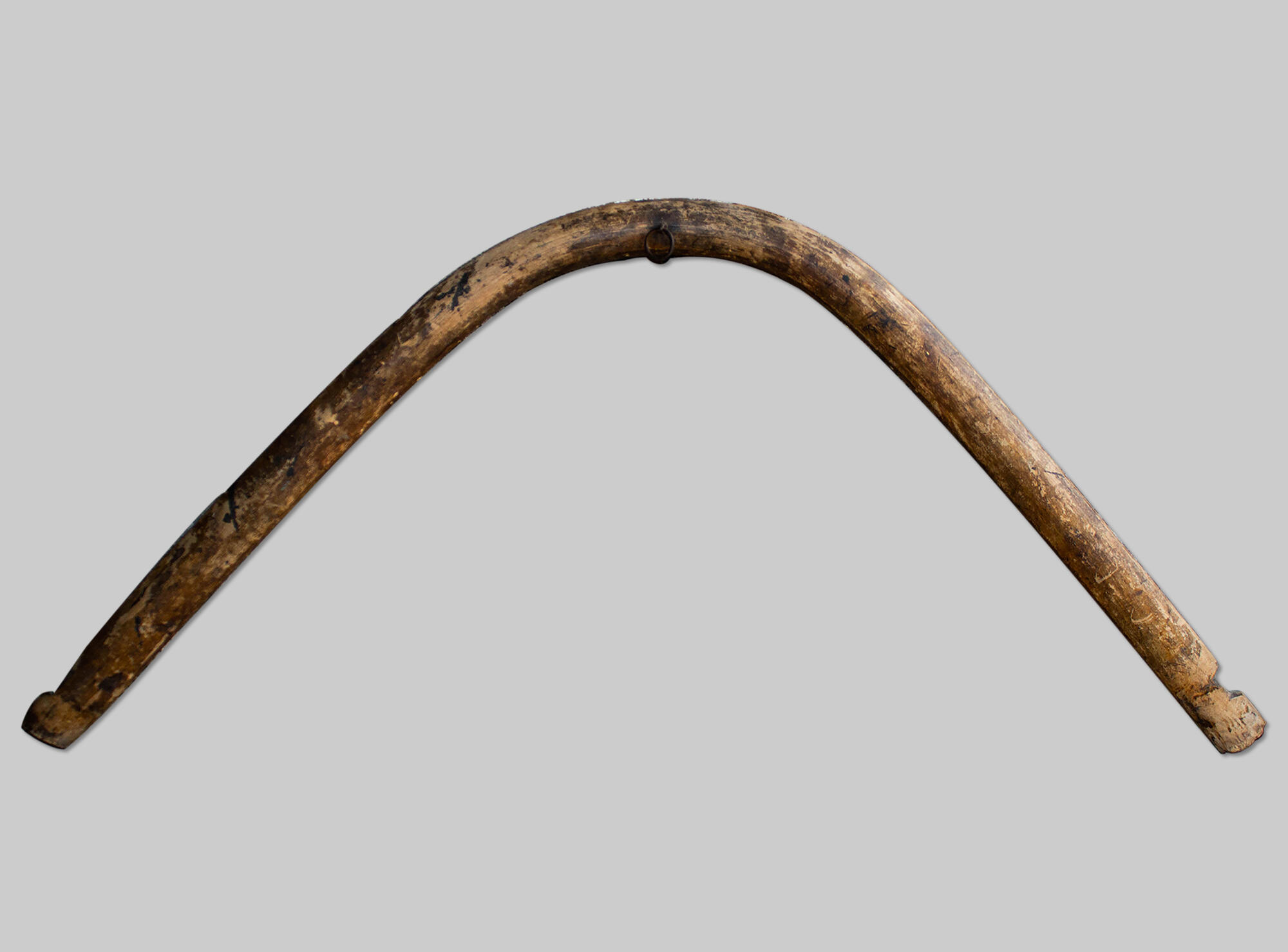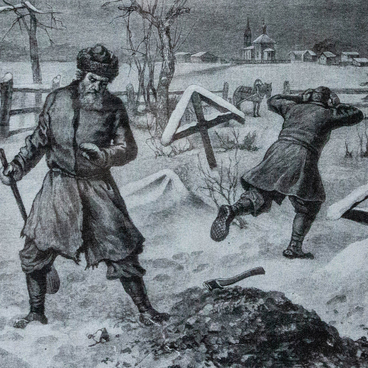A shaft bow is one of the elements of a Russian horse harness. It is believed that Russians borrowed the shaft bow from their neighbors, Finns and Karelians, in the 12th and 13th centuries. The object was often used to harness a horse to a sled or a wheeled cart.
The shaft bow is narrow in the middle and gets wider towards its ends. Its shape resembles a carrying pole. With such a shape the shaft would not hit and rub the horse if the cart or sled fell into a pit. The primary purpose of the shaft bow was to cushion the cart’s shaking when it moved. Moreover, the shaft bow maintained the load balance and distributed the cargo weight evenly.
The dimensions of the shaft bow depended on the size of the horse and the cart. There were one-horse shaft bows as well as shaft bows for troikas, a harness driving combination, using three horses. The exhibit from the Fyodor Reshetnikov Museum collection was used to harness three horses. The middle horse was right under the shaft bow. The other two side horses were harnessed to shafts.
This part of the harness was often decorated with beautiful national painting or wood carving. These decorations were believed to avert evil spirits and bring good luck in travels. Every shaft had a small metal ring attached to it. The ring was attached to the upper part of the shaft bow. It was meant for a regular bell or a sleigh bell. The ring was called “zga” a word derived from the old Russian “stga, ” or “road.” In Russian, there is a saying “so dark you cannot see a zga.” If the carriage driver could not see the ring due to poor weather, he knew that the horse could not see the road either.
The first step to making a shaft bow was to choose the right wood. White willow and elm wood were considered the most suitable. Elm wood is very firm and white willow is light: it was easier for horses to pull a cart with a white willow shaft bow. Birch, oak and hazel wood were also used. Before bending the wood was treated with steam in a sauna or a special steam bath. It was then placed in a special machine where the shaft bow was bent into the right shape but did not break. To bend the shaft bow, horse power was used: the efforts of a human alone was insufficient.
The shaft bow is narrow in the middle and gets wider towards its ends. Its shape resembles a carrying pole. With such a shape the shaft would not hit and rub the horse if the cart or sled fell into a pit. The primary purpose of the shaft bow was to cushion the cart’s shaking when it moved. Moreover, the shaft bow maintained the load balance and distributed the cargo weight evenly.
The dimensions of the shaft bow depended on the size of the horse and the cart. There were one-horse shaft bows as well as shaft bows for troikas, a harness driving combination, using three horses. The exhibit from the Fyodor Reshetnikov Museum collection was used to harness three horses. The middle horse was right under the shaft bow. The other two side horses were harnessed to shafts.
This part of the harness was often decorated with beautiful national painting or wood carving. These decorations were believed to avert evil spirits and bring good luck in travels. Every shaft had a small metal ring attached to it. The ring was attached to the upper part of the shaft bow. It was meant for a regular bell or a sleigh bell. The ring was called “zga” a word derived from the old Russian “stga, ” or “road.” In Russian, there is a saying “so dark you cannot see a zga.” If the carriage driver could not see the ring due to poor weather, he knew that the horse could not see the road either.
The first step to making a shaft bow was to choose the right wood. White willow and elm wood were considered the most suitable. Elm wood is very firm and white willow is light: it was easier for horses to pull a cart with a white willow shaft bow. Birch, oak and hazel wood were also used. Before bending the wood was treated with steam in a sauna or a special steam bath. It was then placed in a special machine where the shaft bow was bent into the right shape but did not break. To bend the shaft bow, horse power was used: the efforts of a human alone was insufficient.


